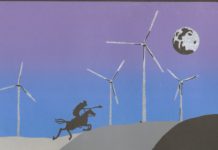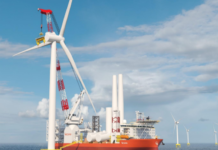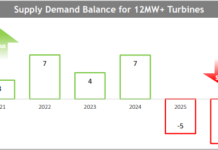Doug Young
Lofty targets contained in a new report show that China intends to push ahead with ambitious plans to build up its renewable energy sector. But perhaps the most interesting thing about this new report is word that Beijing finally intends to sharply reduce the inflated state-set fees now paid for solar and wind-produced power, in one of the sharpest indicators that it expects the industry to stop depending on government support and become commercially viable on its own. Such state support through a wide array of measures, which also include export credits and low-interest loans, have become a huge sticking point that has led to a series of trade wars between China and the west.
All that said, let’s jump right in and look at the latest aggressive targets now being finalized by Beijing under its upcoming 5 year plan for the sector between 2016 and 2020. China makes such 5 year plans for all major sectors, a relic of a Soviet-era practice for centrally planned economies. Under revised figures for its current 5-year plan, Beijing announced late last year it was aiming for national solar power-generating capacity of 35 gigawatts by the end of 2015, a very ambitious target for a country that had virtually no such capacity just 3 years earlier. (previous post)
Anyone who thought that figure looked ambitious will probably think the newest plan looks even more aggressive, aiming to build up solar generating capacity to 100 gigawatts by 2020. (English article) The country has even more ambitious plans for the wind power industry, with a target of 200 gigawatts of capacity by 2020.
At the same time, officials who are leaking details of the upcoming plan are also making it clear that state support will be phased out over the next 6 years for makers of solar panels and wind generation equipment. One of the biggest forms of support comes via artificially high state-set prices for renewable energy, which force big power companies to buy such clean energy at rates that are well above the cost of power from more conventional fossil fuels. The use of such high, state-set fees is also common in the west, used as a policy tool to promote the clean energy sector’s development.
Under the new 5 year plan, China’s tariffs for solar generated power will be reduced by a hefty 50 percent by 2020, falling from the current 0.9 yuan per kilowatt-hour to 0.6 yuan, according to an unnamed government energy official. Wind power tariffs will also be cut sharply, falling to 0.4 yuan per kilowatt-hour from the current 0.6 yuan. Equally interesting is a more general quote from the official saying the solar panel and wind equipment makers should improve the efficiency of their products “instead of depending on government subsidies.”
This is one of the first times I’ve seen a government official openly acknowledge what western governments have been saying all along, namely that Chinese solar panel makers like Trina (NYSE: TSL), Yingli (NYSE: YGE) and Canadian Solar (Nasdaq: CSIQ) get a big advantage over their western rivals due to extremely strong state support through a wide range of favorable policies from Beijing. Such support led Washington to slap anti-dumping tariffs on Chinese solar panels last year, and the European Union has also considered taking similar action.
So what does this flood of new information mean for the Chinese panel industry? The ambitious construction target means that Beijing will continue to push for construction of new solar power plants, even if such plants aren’t economically viable. That problem could become worse as solar power prices are lowered, leading to a bumper crop of unusable solar and wind power plants by 2020. That means that the big Chinese solar panel makers could see strong business over the next 5 years from a domestic building boom, but could then see a sharp slowdown if many new projects prove to be economically unviable.
Bottom line: China’s aggressive new energy power goals and determination to reduce state support could result in a building boom of economically unviable solar and wind power generation plants.
Doug Young has lived and worked in China for 15 years, much of that as a journalist for Reuters writing about Chinese companies. He currently lives in Shanghai where he teaches financial journalism at Fudan University. He writes daily on his blog, Young´s China Business Blog, commenting on the latest developments at Chinese companies listed in the US, China and Hong Kong. He is also author of a new book about the media in China, The Party Line: How The Media Dictates Public Opinion in Modern China.







